The retail sector is one of the most competitive, but it is also the one where the greatest transformations are taking place. To give some numbers, 2015 ended with the online retail sales that were worth 27% of the total, a 11% increase compared to 2014. Mobile purchases also grew by 42%.
What has changed these dynamics so much? Certainly consumer behavior, which forced the brands to adapt to this transformation.
A research report from Econsultancy has investigated the challenges facing retailers and the opportunities that present themselves in this constantly changing sector.
27% of sales in the #Retail sector take place online, +11% compared to 2014. #CustomerExperience
L’ottimizzazione della customer experience
The most exciting opportunity is the optimization of the customer experience. Power has passed to consumers, and it is the biggest change ever in retail. Companies will have to respond by putting the consumer experience at the center of what they do, for example by focusing on satisfying their real needs, linking consumer feedback to optimization tests, and starting from a mobile-oriented approach.
To the question “Which area represents the most exciting opportunity for your company in 2016?” 29% of the sample replied “optimization of the customer experience”, 20% the data-driven marketing that focuses on the individual, and the 11% the cross-channel marketing.
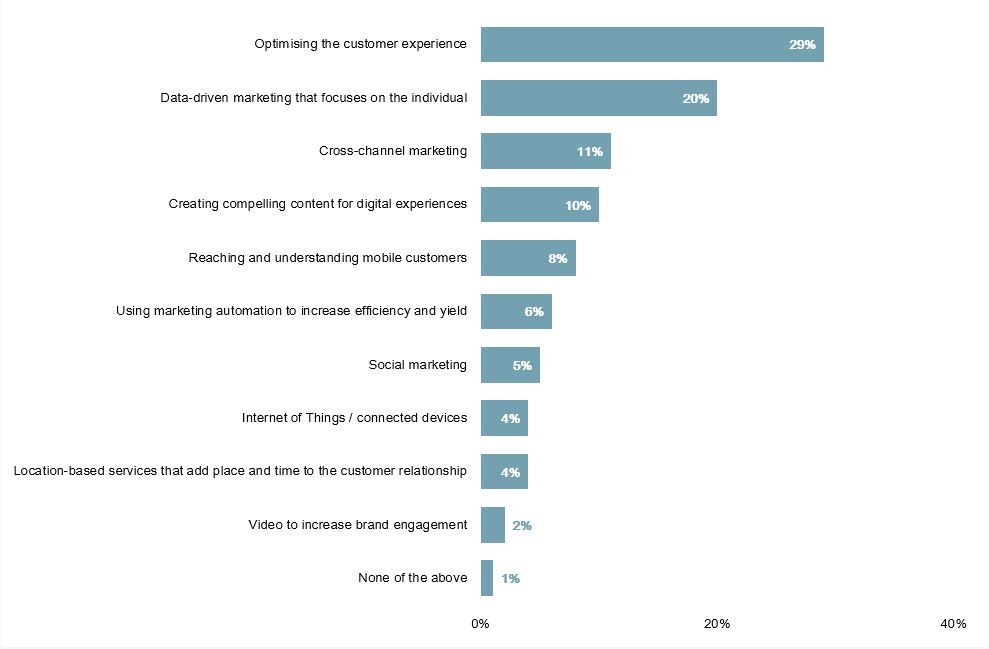
Putting customers at the center is a trend that we also reported from our blog at the end of the year, and on which we are focusing all our research of neuromarketing.
But if that were not enough, there are many research institutes that confirm this important business need: according to one Forrester search, for example:
In 2016, the Customer Experience will be among the ten most critical success factors to determine who will come out the winner and who is not in the age of consumers.
But what is Customer Experience, and what is it based on? Second KPMG and Nunwood, the six pillars of the customer experience excellence are:
– Personalization: striking the attention of the individual in a specific way, to establish an emotional connection
– Integrity: instilling confidence in your target
– Expectations: managing, meeting and even going beyond consumer expectations
– Solutions: transforming a weak and poor experience into a great experience
– Time and effort: minimize the efforts of consumers, and create processes that can be adopted without difficulty
– Empathy: reaching an understanding of all the situations in which consumers can be found, in order to build a deep relationship.
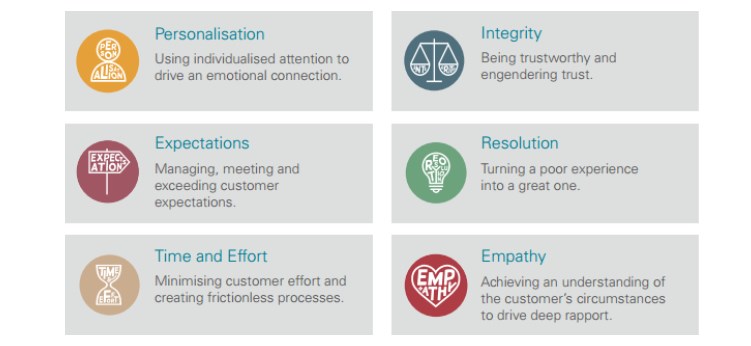
Put customers at the center. Discover the six pillars of #CustomerExperience Excellence
Customer experience customization
One of the priorities for companies is to make the user experience personal rather than personalized. The shopping experience must be personal and relevant for consumers: one third of companies agree on this statement. The goal-guide should be to create one emotional connection between the company’s offer and the consumer’s wishes.
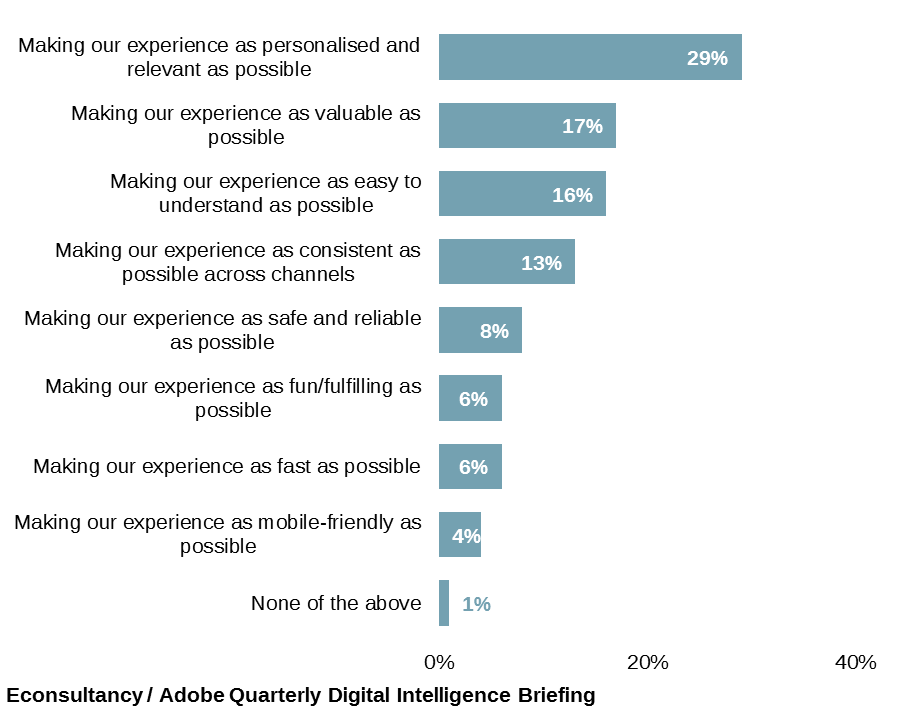
After determining how to implement personalization, you need to be clear with your target audience, with tailor-made messages. It is also important to think about the entire life cycle of the customer, in order to deliver adequate messages at every step of the customer journey.
Combining digital and physical experience
The real winners in retail will be those companies that will succeed in creating a real one omnichannel shopping experience, adopting a company-wide one omnichannel- oriented culture. In other words, the company must guarantee its customers an uninterrupted experience along all the channels, without distinction between digital reality and physical reality.
Why do it? Because that’s what consumers want, who want one shopping experience at full service, meaning that products, prices, product availability and information must be accessible from all channels at any time.
There is no longer a distinction between physical reality and digital reality: we talk about # Omnichannel # CustomerExperience
Some of the ways to ensure an omnichannel shopping experience are:
- to clearly identify to whom the responsibility of theomnichannel, the customer experience and the customer journey within the organization, in order to be able to analyze all channels, so as to understand what can be offered to consumers in the different points of contact;
- buildengaging experiences both in-store and in the phases of research and contact with products during the journey that takes place online;
- attribute the turnover to the correct channels, to avoid the cannibalization of the digital channel with the in-store channel and have a correct measure of returns.
To the question “Do you agree or disagree with the following statements?” (Visible in the figure) the sample responded as follows:
- 83% of companies agree that consumers are increasingly expecting relevant product informationin every digital marketing channel;
- 79% of companies agree that consumers expect to receiverelevant information regardless of the device they use;
- 51% of companies agree that consumers expect thatthe company knows them and knows what they want based on the previous online interactions.
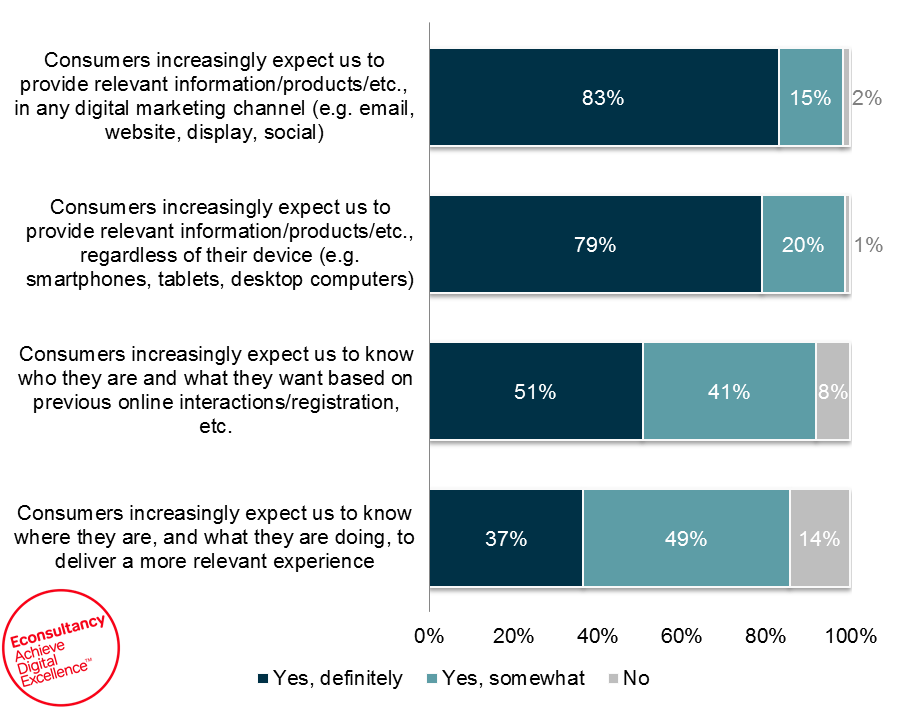
Data-driven marketing is the key to success
An approach data-driven, that is driven by data, it is seen as fundamental in order to achieve all these objectives. In addition to having to spread one culture around the importance of data, a data-driven approach can be useful for:
· collect data consistently, so as to skim them and focus on what is really important with respect to your business goals;
· use data to refine proposals to customers, segmenting customers into groups and continuously testing the most appropriate offers;
· use the data to allow the supply chain to function more efficiently.
At the request “Order the following five areas with respect to what is a priority for your company in 2016“, the 93% of the sample inserts data-driven marketing among the top three, and 56% assign a priority role to this activity.
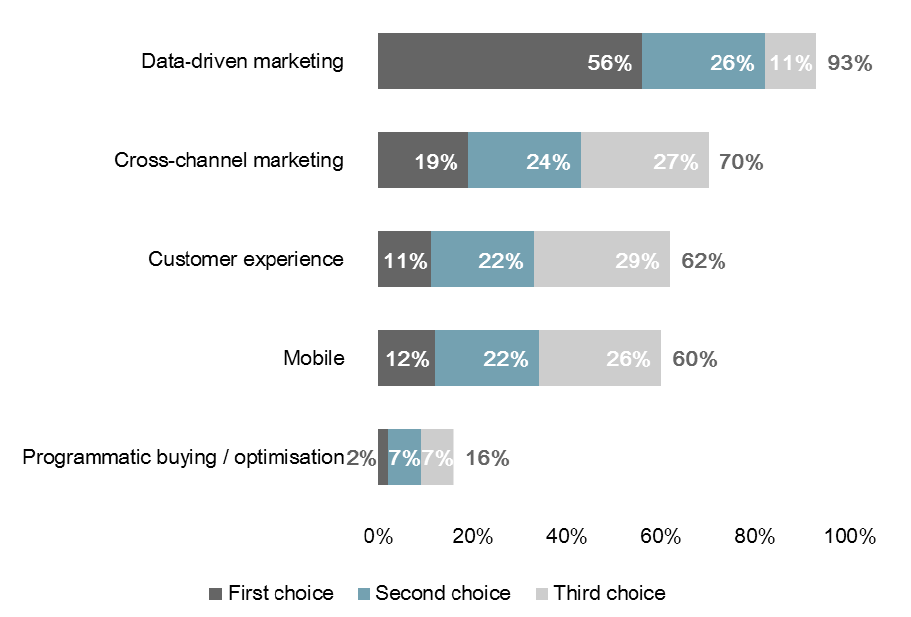
However, most companies still have separate and non-connected technologies to collect, manage and interpret data related to different channels. The importance of data analysts and data scientists is always greater: in a recent article Inc. on Airbnb it is explained that data science is “the new MBA”, a role that is increasingly necessary not only to know how be familiar with and analyze data, but above all to be able to interpret them in a social perspective – with attention to what happens out there – and organizational – without forgetting the business needs.
The tools for measuring in-store experience – like the eye tracking glasses – are therefore of fundamental importance to follow the decision-making path towards the purchase of consumers, in an analysis that goes in addition to digital and successfully integrates it into the overall user experience.
New retail challenges
A great role in the evolution of the retail sector is played by technology, especially if we think of a local- oriented approach, but the central element seems to be linked to the transformation of the corporate culture, which must be increasingly oriented towards the integration between digital reality and physical reality.
Future challenges that cannot be underestimated concern:
· the identification of new opportunities in the offer of distribution services, collaborating with innovative start-ups and other companies in order to expand their distribution channels;
· the use of social media to invite consumers to provide feedback and promote products;
· use of data to understand how you are transforming your industry and optimize the offer based on consumer feedback.
Credits for immages: Econsultancy